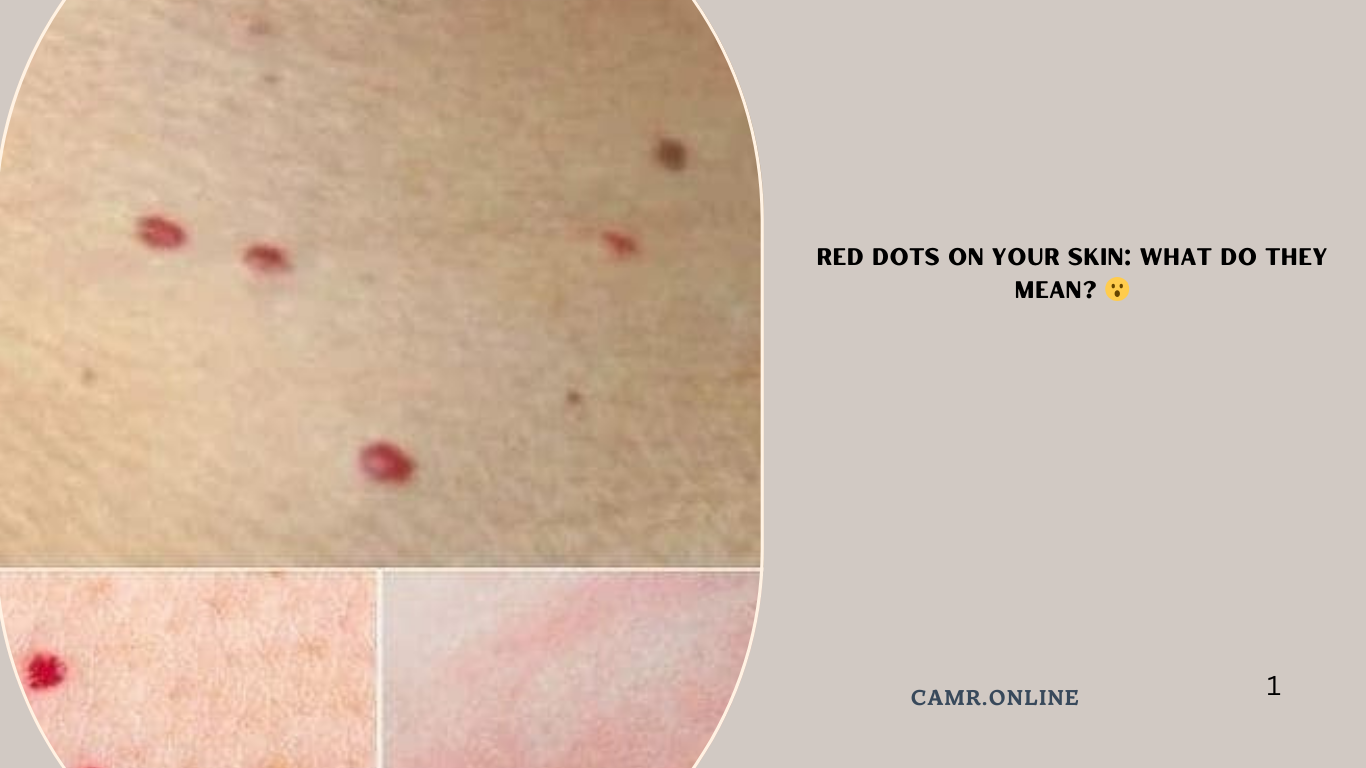Have you ever noticed small red dots appearing on your skin and wondered what they could signify? These tiny spots, often referred to as petechiae or cherry angiomas , might seem harmless at first glance, but their underlying cause can vary. While some red dots are benign, others may indicate a more serious health issue. Understanding the potential causes is essential for maintaining your well-being.
In this article, we’ll explore common reasons behind red dots on the skin, when to seek medical attention, and how to differentiate between harmless and concerning conditions. Let’s dive in!
Why Red Dots Appear on the Skin
Red dots on the skin can result from several factors, ranging from natural aging to underlying medical conditions. Here are some of the most common causes:
1. Cherry Angiomas
- What Are They? Cherry angiomas are small, bright red spots caused by dilated blood vessels near the skin’s surface.
- Who Gets Them? They’re usually harmless and tend to appear as people age, often on the torso, arms, or legs.
- Significance: Generally benign, but if they grow rapidly or bleed easily, consult a doctor.
2. Petechiae
- What Are They? Petechiae are tiny red or purple dots that occur when capillaries under the skin break, causing bleeding.
- Causes: Straining (e.g., during coughing, vomiting, or lifting heavy objects), blood disorders, infections, or certain medications.
- Significance: If petechiae appear suddenly or cover large areas, it may signal a medical concern like low platelet count or clotting issues.
3. Keratosis Pilaris
- What Is It? Keratosis pilaris is a common condition characterized by rough, red bumps, often mistaken for dots.
- Who Gets It? Typically affects younger individuals and appears on the upper arms, thighs, or cheeks.
- Significance: Harmless and caused by excess keratin buildup; moisturizing can help reduce its appearance.
4. Allergic Reactions
- What Are They? Small red dots or rashes may develop due to allergies to food, medication, or environmental factors.
- Significance: Usually temporary, but persistent or widespread reactions warrant medical evaluation.
5. Blood Disorders
- What Are They? Conditions like leukemia, anemia, or thrombocytopenia (low platelet count) can cause red dots due to impaired blood clotting.
- Significance: Seek immediate medical attention if accompanied by fatigue, unexplained bruising, or other symptoms.
6. Infections
- What Are They? Certain bacterial or viral infections, such as meningitis or mononucleosis, can lead to red dots on the skin.
- Significance: Accompanying fever, chills, or severe headaches require urgent care.
When Should You Worry?
While many red dots are harmless, there are instances where they may indicate a deeper issue. Look out for these warning signs:
- Sudden Appearance: If the dots appear abruptly and spread quickly.
- No Pressure Fading: Unlike regular rashes, petechiae don’t fade under pressure.
- Accompanying Symptoms: Fatigue, weight loss, fever, or night sweats.
- Bleeding or Pain: Dots that bleed, itch, or cause discomfort.
- Large Size or Clusters: Unusually large spots or groups of dots may signal a vascular issue.
If any of these apply, consult a healthcare professional promptly.
How to Differentiate Between Benign and Concerning Dots
Tips for Managing Harmless Red Dots
For conditions like cherry angiomas or keratosis pilaris, here are some self-care tips:
- Moisturize Regularly: Use hydrating lotions or creams to soothe dryness and improve texture.
- Avoid Irritants: Steer clear of harsh soaps, tight clothing, or allergens that exacerbate skin issues.
- Protect Your Skin: Wear sunscreen to prevent further discoloration or irritation.
- Healthy Lifestyle: Maintain balanced nutrition and hydration to support overall skin health.
Medical Treatments for Persistent or Concerning Dots
If red dots persist or raise concerns, your doctor may recommend:
- Laser Therapy: Effective for removing cherry angiomas or spider veins.
- Biopsy: To rule out cancerous growths or blood-related conditions.
- Medications: Antibiotics, antivirals, or treatments targeting underlying causes.
- Dermatological Consultation: A specialist can provide personalized advice and treatment options.
FAQs About Red Dots on the Skin
Q: Are cherry angiomas dangerous?
A: No, cherry angiomas are typically harmless. However, if they change shape, color, or bleed frequently, consult a dermatologist.
Q: Can stress cause red dots on the skin?
A: Stress-induced rashes or allergic reactions can manifest as red dots. Manage stress through relaxation techniques or therapy.
Q: How do I know if the dots are petechiae?
A: Press firmly on the spot with your finger. If it doesn’t fade, it’s likely petechiae, which requires further investigation.
Conclusion
Red dots on the skin can range from harmless to indicative of a larger health concern. By understanding their possible causes and recognizing warning signs, you can take proactive steps toward diagnosis and treatment. Whether it’s a simple cherry angioma or something more complex, always prioritize your health and seek professional guidance when in doubt.
So next time you notice those little red dots, don’t panic—evaluate, observe, and act accordingly. Your skin is a reflection of your overall health, so listen to its signals! 🧡✨







